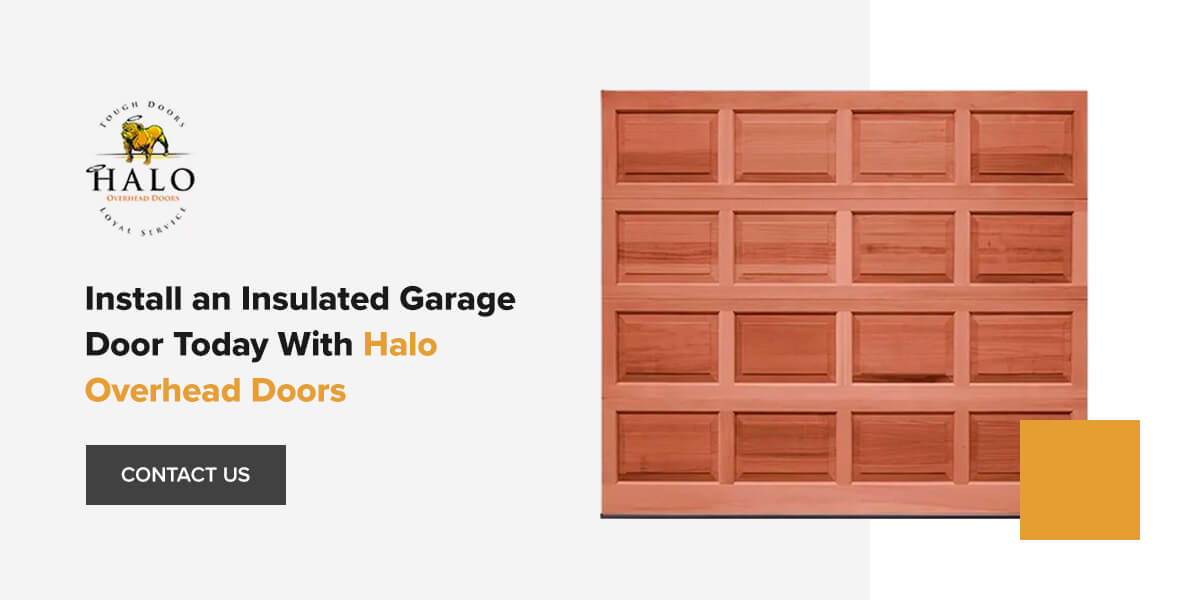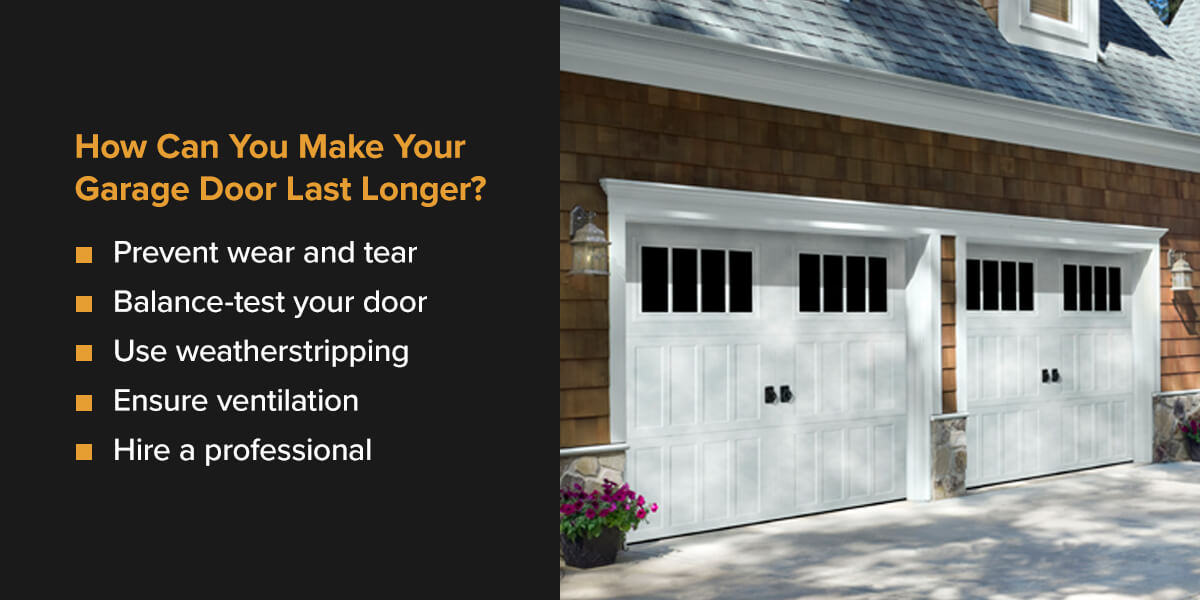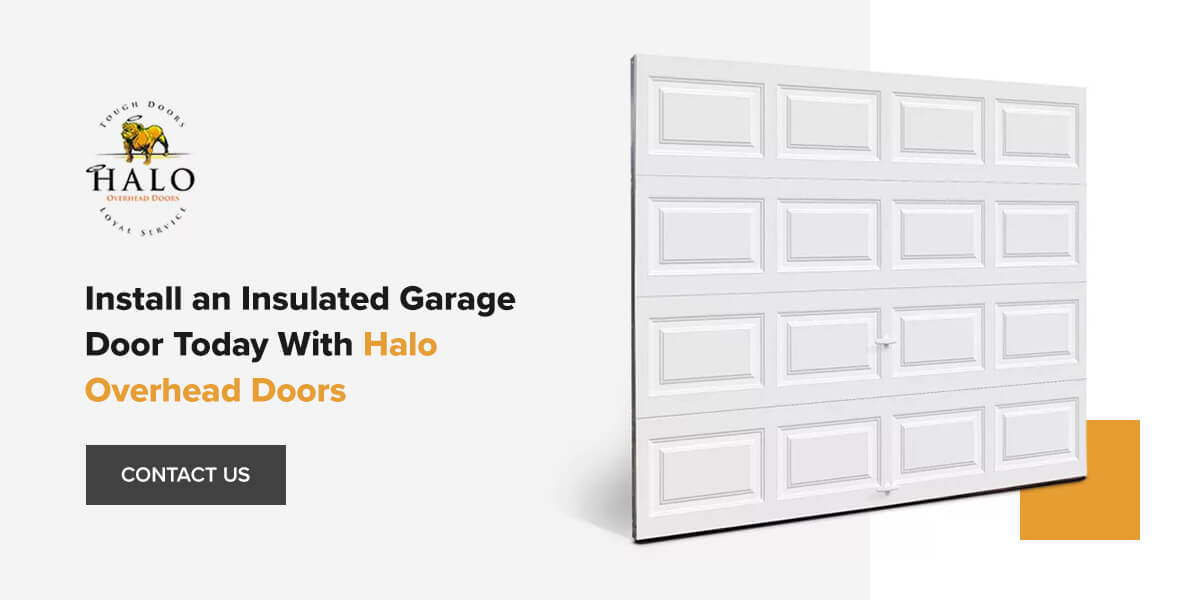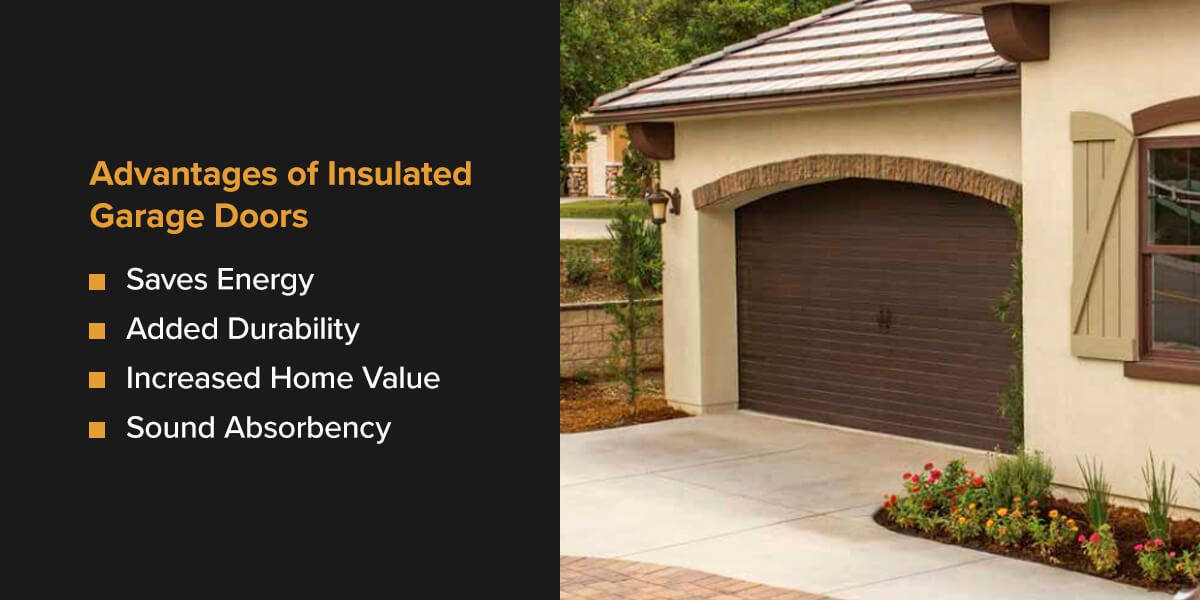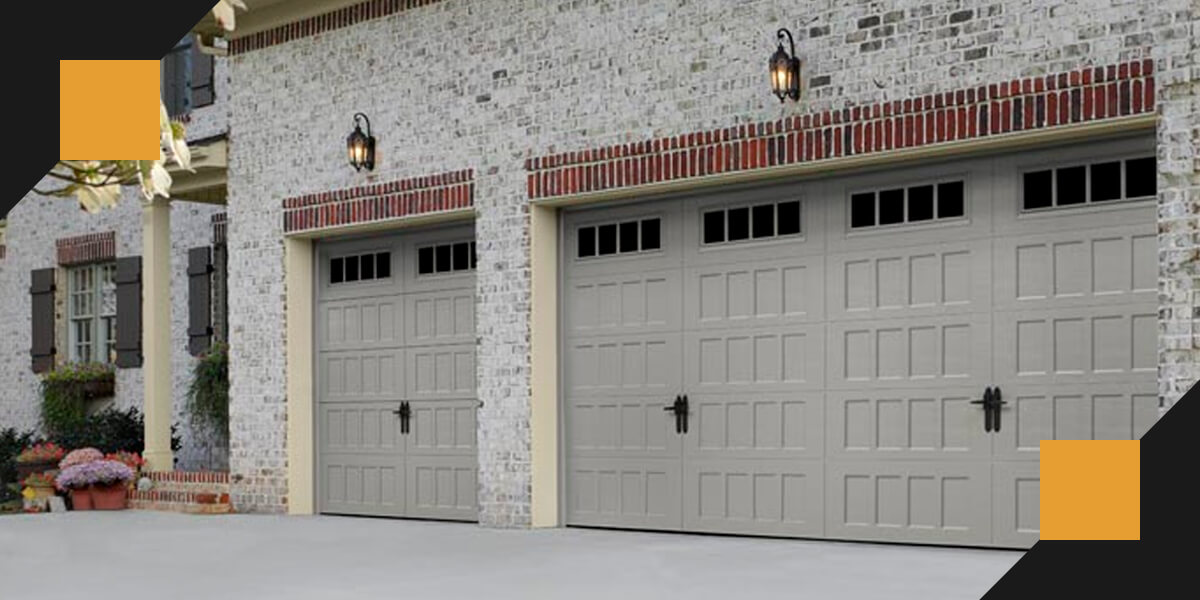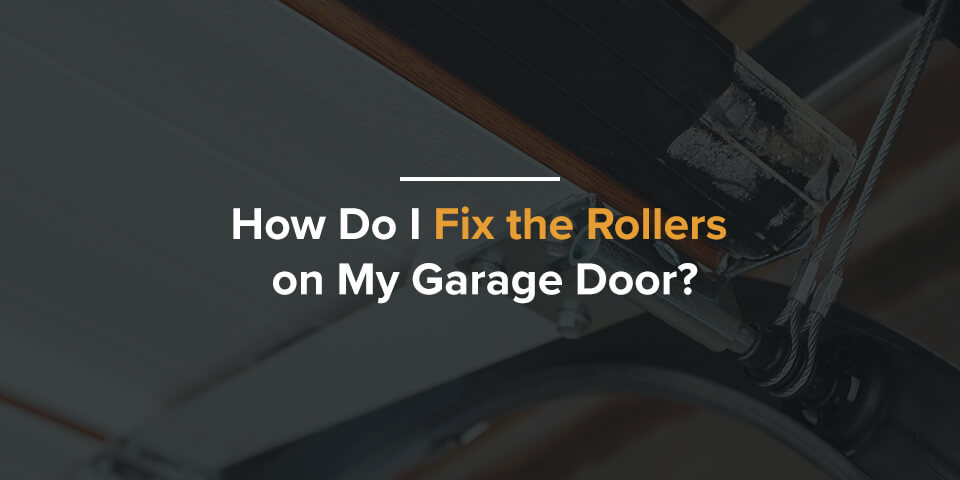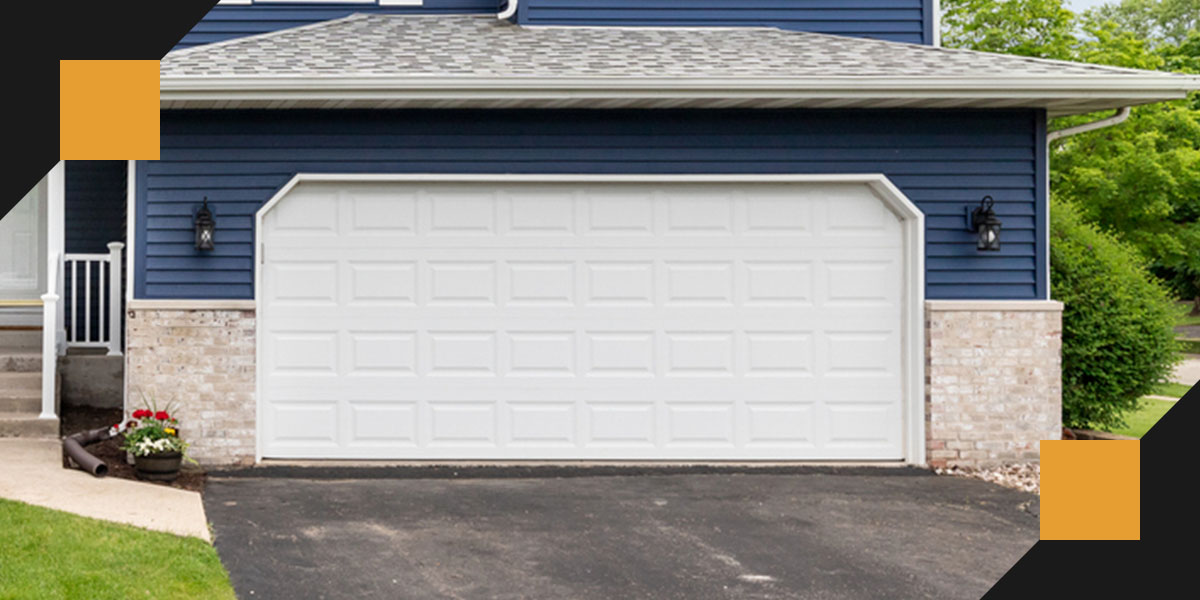How Often Do You Need to Replace Your Garage Door?
After years and years of use, you may find your garage door needs to be replaced. This entryway is likely one you use every day, whether to enter your home, park your cars or use your garage as a separate functional space. Over time, wear and tear and general use can lead to issues that may require you to replace the entire garage door.
Below, learn more about garage door replacement and how often you can expect to replace your garage door as a homeowner.
Table of Contents
- When Should You Replace Your Garage Door?
- What Are the Benefits of Replacing Your Garage Door?
- How Can You Make Your Garage Door Last Longer?
- Get Professional Garage Door Replacement Services
When Should You Replace Your Garage Door?
While your garage door may need some maintenance and a spring or roller replaced every now and then, the door itself is a sturdy and reliable feature of your home, so you shouldn’t have to replace it frequently. A garage door can last 15 to 30 years before needing replacing, with some standing strong for upwards of 50 years.
When the time does come to replace your garage door, you’ll need to know the signs, so you can get your garage door replaced quickly. Here are the top signs of damage and decay that suggest it’s time for a new garage door:
- Slow opening times: It should only take seconds for your garage door to open after pressing the button. While waiting an extra few seconds for your door to open is acceptable, it might be a sign of underlying damage, especially if the delay gets longer. There are a number of reasons for your garage door opening too slowly, like the remote, faulty rollers or broken opener cords.
- Sagging: A sagging door may be a result of the pulley being out of alignment. If your garage door snaps or slams open, it means it’s gone off-balance. A new garage door might be your best option if this keeps happening.
- Noisy operation: Squeaking means you must lubricate your door, but rattling and popping noises are signs of damage or decay. Other unusual sounds are grinding, banging and rumbling. A loud garage door can be disruptive for you and your neighbors and likely indicates that a repair is needed. Sometimes, it’s more cost-effective to replace the door than continuously pay for repairs.
- Off-track door: A garage door can dislodge itself from its tracks or rollers while moving. When this happens, it may start to malfunction or open unevenly. If this keeps happening, then your door may need replacing.
- Rising electricity bill: Garage doors lose their insulation as they age, which means they allow more cold air in and let more warm air out. If your electricity bill is higher than usual, it may be from your garage door’s worn insulation and weather sealing. Replacing the door is easier and potentially more cost-effective than reinsulating it.
If you notice any of the above signs or other indicators that may signal your garage door could need replacing, contact a professional garage door installer to start the process, so you can go back to using your garage as usual quickly.
What Are the Benefits of Replacing Your Garage Door?
Replacing your old garage door with a new one can bring multiple benefits, such as:
- Safety and security: A new door is better for your home’s safety and security. New garage doors can have additional safety precautions like keypad locks that can only be opened with a password or smartphone.
- Curb appeal: Your garage door is a noticeable feature of your house. Upgrading your garage door can significantly impact the appearance of your property.
- Higher resale value: A new garage door might increase your home’s resale value because of the benefits it can bring.
- Less maintenance: A new garage door requires less maintenance than an old one, so you won’t have to spend money or time on frequent repairs.
How Can You Make Your Garage Door Last Longer?
The life span of your garage door depends on many factors, including the material it’s made of, its quality and how often it’s maintained. There are several steps you can take to extend the life span of your garage door:
- Prevent wear and tear: Several moving parts help your garage door function properly. Springs, cables, tracks, hinges and rollers are all susceptible to wear and tear over time. Regular maintenance of these parts can make your garage door last longer, so try not to neglect making small repairs when they’re needed.
- Balance-test your door: Ensuring your door is properly balanced is a vital part of its operation. An imbalanced garage door’s springs and opener will receive more wear and tear. Have a professional test the balance of your garage door every year.
- Use weatherstripping: Your garage door affects your home’s security, convenience and heat retention. It’s always exposed to the elements, and over time, that can lead to a lot of damage. By weatherstripping your door, you’ll keep it protected and keep it functional for longer.
- Ensure ventilation: Without proper ventilation, moisture can build up and lead to mold, rust, and mildew, which can damage your garage door and its components. Windows in your garage and vents allow for air circulation that will help prevent moisture and dampness from affecting your door.
- Hire a professional: When in doubt, it’s always best to call an expert. Hiring a professional saves you time and money, ensuring the job happens correctly the first time. A professional has the knowledge and experience to keep your garage door operating as it should, can find issues before they escalate and help you reduce the effects of wear and tear.
Halo Overhead Doors Offers Premier Garage Door Replacement Services
Your garage door adds a lot of value to your home, both functionally and visually. Taking the time to maintain your door and trusting the right supplier for a new garage door is the key to keeping your garage door at its best for decades.
Halo Overhead Doors offers reliable garage door replacement and maintenance services throughout the Houston area.
Contact our team to learn more about our services and offerings.
Benefits of Insulated Garage Doors
Pros and Cons of Insulated Garage Doors
Upgrading your garage door is an excellent home improvement project with various benefits. Deciding on a new garage door can be tricky, so we’ve compiled a complete overview of the advantages of installing an insulated garage door to help you learn if it’s a good fit for you. Each type of garage door has unique upsides and downsides, including insulated garage doors. It’s always worth considering these before buying a new door. To effectively weigh the assets and potential liabilities, start by thinking about your wants and needs.
Consider what aspects are non-negotiable and which features you are willing to compromise on. Do you have a specific design in mind? Do you have kids or pets that may damage your garage door? What do you store in your garage? These are all questions to get you thinking about what your ideal garage door will look like and what features it will have.
Table of Contents
- Advantages of Insulated Garage Doors
- Disadvantages of Insulated Garage Doors
- Install an Insulated Garage Door Today
Advantages of Insulated Garage Doors
Insulated garage doors are a popular choice among homeowners for a reason. Various benefits come with installing an insulated garage door. From energy efficiency to sound absorbency, learn more about the advantages of insulated garage doors below.
Saves Energy
As the name suggests, an insulated garage door lets you maintain your desired temperature all year long. Attached garages are a significant culprit in heating or cooling loss. Air can escape or enter through your garage, forcing your HVAC system into overdrive to maintain your requested temperature.
With an insulated garage door, you can avoid this constant temperature fluctuation. By keeping warm or cool air inside your garage, you can use less energy to maintain your desired temperature. Of course, you’ll also have lower energy bills. Insulated garage doors create an energy-efficient garage that keeps your home and belongings at a comfortable temperature for a fraction of the energy costs.
Added Durability
The insulation that regulates your garage temperature also acts as a thick protective layer that increases your garage door’s durability. As a result, your garage door is more impact- and shock-resistant. An insulated garage door can easily handle the daily wear and tear of opening and closing.
Insulation keeps the door in excellent shape, but it also helps the garage door opener function correctly by keeping it at an ideal temperature. Thanks to an insulated garage door, the motor and any moving parts can function even in extreme weather.
Increased Home Value
Garage doors offer one of the highest returns on investment for home improvement projects. A new garage door improves your home’s curb appeal while increasing your home’s functionality. Installing a new insulated garage door lets you change or enhance your home’s exterior design. Select a modern-style insulated garage door to update your home’s look, or pick something that coordinates with your current aesthetic. Either way, a new garage door makes your home look put together.
While potential buyers look for aesthetic value, they also value homes with highly functional appliances — garage doors included. New garage doors experience fewer issues and maintenance needs than older models. Homeowners will also appreciate that a brand-new garage door will last them a long time. An older garage door will likely need a replacement someday soon, which is a task some potential buyers may want to avoid.
A new insulated garage door will be even more appealing because buyers will understand the energy savings they’ll benefit from. As a result, you can expect to see your home sell for a higher amount than it would have without the insulated door.
Sound Absorbency
Insulated garage doors have a thick layer of insulation that can decrease noise. This insulation can absorb distracting or unwanted outside noise, such as traffic, barking dogs or lawnmowers. It can also minimize any noise coming from inside the garage. So, you can work with your tools, listen to music or host a gathering without worrying about bothering your neighbors.
Additionally, the added insulation will help your garage door operate more quietly. The insulation absorbs more operating noises, so you can open your garage door late at night or early in the morning without disrupting sleeping family members in your house.
Disadvantages of Insulated Garage Doors
While insulated garage doors provide multiple advantages to homeowners, no garage door is perfect. Before installing an insulated garage door, review the following disadvantages below.
More Expensive
Since insulated garage doors have more benefits, they will cost more upfront. Even the most affordable insulated garage door will still have a higher price tag than any uninsulated option. However, while there is more of an initial investment, your insulated garage door can save you money in the long run by lowering your energy bills and increasing your home’s value.
Ineffective When Left Open
When left open, an insulated garage door is no different from an uninsulated one. An insulated garage door cannot help regulate your garage’s temperature if you leave it open for extended periods. For your garage door to be effective, you need to keep it closed. If you frequently keep your garage door open, an insulated garage door may not be the best fit for you.
Install an Insulated Garage Door Today
Start reaping the benefits of an insulated garage door and schedule an insulation today. At Halo Overhead Doors, we offer many garage door styles, so you can always find a door that fits your design taste and preferences. Plus, our clients also enjoy extended warranties and 0% financing options.
Our team of experts is ready and eager to help you find the perfect insulated garage door for your home. Use our online form and contact us today for a free estimate or stop by our beautiful showroom to speak to an expert in person.
Maintenance Tips for Commercial Garage Doors in Houston
Your garage door is an essential part of your everyday routine as a business. You have to rely on a quick exit and entrance to deliver goods, offer reliable services and keep up productivity. You also trust your door to keep valuable parts, machinery, products and staff safe.
Your garage will always need a little bit of maintenance throughout the year to keep it running. From cleaning the tracks to lubricating the rollers, you’ll need to inspect your door and make sure it’s working correctly. If you’re experiencing drafts, hear startling noises or your door is reaching the end of its lifespan, you may need to replace your door and start fresh with a new one.
There are many common problems when it comes to garage doors. Thankfully, we have some commercial garage door maintenance tips that can help you keep your door running smoothly so you can focus on what drives your business.
Tighten the Bolts
After years of consecutive use, your bolts will show signs of wear and start to loosen. Businesses may use their garage doors multiple times a day as staff members clock in, clock out or leave for a scheduled service. All of that opening and closing takes a toll on the pieces that keep your door moving.
You should check the bolts on your hinges, brackets and spring plates. The bolts on your hinges may have widened the holes that keep them in place after a lot of use, and if you notice this, you should replace the screws with ones that will allow for a tighter fit. When you check the screw on your brackets, you should also ensure that the tracking system is level so your door won’t become misaligned.
Lubricate Moving Parts
Keeping your door lubricated will help it run smoothly and extend its lifetime. You’ll want first to remove any dirt or buildup that you find is in the way of moving parts. You should plan to lubricate your door about twice a year, but you may want to add more if you use your door more frequently.
You may find rust on your springs, which you should remove as soon as possible so they don’t snap. Your torsion or extension springs need special attention because these are the parts that open and close your door. If your door is snapping shut or struggling to open, it’s probably time to get these replaced.
You should never try to replace springs on your own because they can become projectile when they break and cause injuries to yourself or staff and damage vehicles and equipment. It’s always best to contact a professional if you think you need to replace your garage door springs.
Check for Damages
It’s always a good idea to look for damage when you perform your garage door inspections. As you examine your door, bring some cleaning supplies and give everything a good wipe down. Cleaning debris will help you spot any cracks, bends or other damages in places where there’s excessive dirt. It’s essential that you remove any buildup that you find in the tracks because this can prevent your door from opening and closing smoothly.
Some damages will only worsen if you don’t fix them and affect other parts of your door. For instance, the rollers aid in moving your door quietly, and when these pieces are worn or broken, the rest of the unit will have to work harder to get your door to the right place. This will create a screeching sound and put a lot of strain on those other parts and pieces, leading them to break. Some pieces you may be able to replace on your own, but others could cause injury, so you should hire a professional to service those parts.
Look for Rust
Metal is prone to rust, which can make your door less attractive and cause future door problems. Rust makes metal weaker and can create holes if you don’t remove it. Additionally, rust on moving parts can cause your door to get stuck when you try to open or close it. If you don’t give your door proper maintenance, it won’t last as long as you need. Areas with humid air can cause rust to appear sooner than others, so you should check for this more often.
While modern doors are more resistant to rust, older steel doors are especially susceptible to rust, and you should contact a professional to take care of your rust issue before a larger one develops. You may decide to replace your door instead of getting it repaired, but an experienced technician will be able to inspect your door and tell you the best course of action.
Check the Insulation
You want to ensure that your door is energy-efficient, especially in very hot or cold weather. If your team works in the garage, it’s essential that they can stay cool in the summer and warm in the winter. First, you should evaluate the door’s weatherstripping to determine if it’s worn. The seals on your door should prevent dirt, air, insects and moisture from coming under the door. If it’s worn, you should replace it.
However, if you’re still seeing high energy bills or feel a draft when the door is closed, you may want to get your door replaced. Modern doors have a layer of insulation that keeps the inside of your garage safe from the elements, and they tend to last longer with an added layer of protection.
Using an insulated door will reduce the chances that air and energy escape and keep your team and equipment safe from the weather. Additionally, insulated doors add a layer of protection from break-ins and can keep your equipment and property safer.
Contact HALO Overhead Doors for Garage Door Repairs
HALO Overhead Doors is a family-owned garage door business that has been operating since 1991. We believe each door is an opportunity to serve, and our team is passionate about providing you with solutions that fit your budget and preferences.
We know you want to protect your business, property and staff, and we have a large selection of doors to meet your needs. Every one of our team members has five or more years of experience in the industry and knows how to handle any problem you have.
HALO provides tough doors and loyal service. Schedule a service or request an estimate with HALO Overhead Doors. Whether you need a new door or maintenance on your current one, we’ve got you covered.
How Do I Fix the Rollers on My Garage Door?
Garage door rollers play an important role in allowing your doors to roll through the vertical and horizontal tracks with ease. If they break, the door can jam as it opens and closes, so how do you fix the rollers on your garage door?
Depending on the material and wear and tear, rollers typically last between 10 and 20 years. Replacing the rollers takes a few expert-level steps and the doors run smoothly again.
What Are Garage Door Rollers?
Garage rollers are the small wheels on your garage door. The wheels fit into tracks on either side of the door, enabling it to move up and down.
These wheels often contain ball bearings to reduce friction, letting the rollers move more smoothly and quietly. The wheels attach to a shaft that fits into a steel bracket on the garage door. When they’re working correctly, these rollers move along the tracks and guide your garage door up and down.
Types of Garage Door Rollers
Garage rollers come in a variety of materials, each with advantages and disadvantages:
- Plastic rollers: Made of hard plastic, these basic rollers are inexpensive and often come with new garage doors. However, they typically only last a couple of years.
- Steel rollers: Durable and cost-efficient, steel rollers are a solid step up from hard plastic. However, they’re often noisier than other rollers and need regular lubrication. Rust may also be a concern if they’ll be operating in a damp environment.
- Nylon rollers: While more expensive than either plastic or steel, nylon rollers have become a popular choice. Their highly durable nylon is quieter and more weather-resistant than steel and these rollers require very little maintenance overall.
Knowing the type of garage door roller, you have will be very helpful when you need to fix or replace them. You’ll be able to estimate how long your rollers will last and how frequently you’ll need to maintain them.
What Tools Do I Need to Change My Garage Door Rollers?
Choosing the right tools for the job can be challenging. There are many different types of screwdrivers and clamps, so which are the right ones for changing the garage door rollers? Here’s a comprehensive checklist:
Having a partner or helper is optional but highly recommended. Working in pairs not only makes the project go faster, but it also lowers the risk of injury or causing further damage to your garage door.
How Often Should I Replace My Garage Door Rollers?
How long garage rollers last largely depends on the type of rollers you have. While basic plastic rollers usually only last a couple of years, steel rollers and nylon rollers can last decades.
The life of your rollers also depends on the average number of daily cycles your garage door goes through or how many times it opens and closes on a daily basis. When buying garage door rollers, you can measure their longevity by their cycle ratings. While you’ll likely have to estimate your average daily cycles, this rating can still give you a good idea of how long the rollers should last.
How Do I Know If I Need New Garage Door Rollers?
Once you know what to look for, you’ll find there are various other signs that can let you know it’s time to replace your rollers:
- Old age: One of the easiest ways to know if it’s time to replace your garage door rollers is to check the cycle rating. If you remember when you bought them, this rating will give you an idea of whether or not your rollers are approaching the end of their lifecycles.
- Noisiness: If you hear a constant grinding, scraping or screeching noise, it may be a sign that you need to replace your garage door rollers. You may just need to add some lubrication if you have steel rollers, while plastic or nylon rollers may be on their last legs.
- Shaking: Rusted garage door rollers can cause your garage door to vibrate and shake as it opens. Check the tracks for signs of rust, especially if you have steel rollers.
- Slow operations: Even the most durable materials can only last so long. General wear can make your garage door rollers less effective, making your garage door open more slowly than usual.
- Visible signs of wear: Make sure you inspect your garage door rollers every so often for signs of damage. Check for cracking and chipping, loose parts and any broken seals on the rollers. Your garage door is made up of a lot of intricate parts — it’s important to check every once in a while to make sure everything is still intact.
Still not sure about the condition of your garage door rollers? Get in touch with an expert from Halo today!
How to Replace Garage Door Rollers: Step-By-Step
Worn-out or broken rollers are a common garage door problem. Learning how to replace garage door rollers can help you identify potential issues. Here are the steps to replace the rollers:
1. Position the Garage Door
When replacing middle and top rollers, it’s easier to work when the door is down. Secure the bottom rollers with C-clamps to prevent the door from accidentally rising. When replacing the bottom of the door, remove the clamps and lift the door up completely.
2. Disconnect the Power Supply
Shut off the power supply to avoid any accidents. Note that you’ll need to leave it on when changing the middle and top rollers to move the door down.
3. Examine Your Rollers
Look for cracked, loose, or broken rollers. If they’re older than 20 years or past the recommended removal date, replace them.
4. Inspect Tracks and Parts
Check out the tracks to ensure they aren’t bent, as this can cause intense vibrations that loosen the bolts and screws holding it together. Use a flathead screwdriver to tighten any loose screws. Ensure the springs and chain haven’t loosened. Sometimes, it’s not the rollers causing the shaking or noise but the tracks or other parts.
5. Clean the Tracks
When changing garage door rollers, it’s important to remove dirt or grease from the tracks before working. This step keeps the garage door running smoothly and makes replacing rollers easier.
6. Unwind the Torsion Springs
Garage door springs function as a tension source for the garage door. You’ll need to loosen them to make it easier to work with the door. Note how many quarter turns you take when loosening them so you can adjust them back to their original state when you’re done changing garage door rollers. Wear protective goggles when handling broken springs to prevent injuring your eyes.
7. Remove the Hinges From the Middle and Top Rollers
When replacing the middle and top rollers, you’ll need to remove the hinges. With the hinges removed, it is easier to replace the rollers, and you can simply reattach them when you’re done. When replacing the bottom rollers, you should never remove the hinges, as the bottom bracket has the cable attached and without the bracket, the cable flies loose, which could be extremely dangerous.
8. Attach the Garage Door Rollers
Stand on the ladder for extra height and stability, and slide the garage roller onto the track. Ensure it’s properly aligned with the track and moves smoothly back and forth. If you grease your garage door and tracks, this process should go smoothly. Repeat this step for every garage door roller until the track is full.
9. Reconnect and Test
Rewind the torsion springs and put the hinges back up. Garage doors will last longer if you know how to test them. Turn the power back on and open and close the doors. If you hear a loud noise or the door is wobbling side to side or slipping off alignment, you might need to repeat these steps or schedule a service with a professional.
Safety Tips for Changing Garage Door Rollers
While you can change garage door rollers yourself, it’s best to leave this task to a professional. The process can be extremely dangerous if you’re inexperienced. Here are the top safety tips from experts:
- Always cut the power before you start working.
- Make sure to unplug the garage door opener.
- Never remove the hinges when changing bottom rollers.
- Ensure a family member or friend is in the house should you require assistance.
Contact Halo Overhead Doors for Your Garage Door Repair Needs
Garage door repairs can be tricky, and it’s best not to take any risks. Our technicians all have over five years of experience in installing, maintaining and repairing garage doors. Since 1991, we’ve provided only the best garage doors and services, and we can’t wait to help you next. Contact Halo Overhead Doors today!
Can You Fix a Garage Door Yourself?
Determining whether you can fix a garage door yourself involves having the experience, training and the right tools to perform the job. Simple fixes like lubricating hinges or replacing batteries in remotes are doable for beginners. However, more complex problems involving springs, tracks or alignment may require professional help due to safety risks and the need for special tools.
Before attempting any repairs, understand how your garage door works and how to follow safety precautions. For those without specific training or experience, contacting a professional garage door repair service like Halo Overhead Doors is the best solution for avoiding accidents and ensuring the job gets done correctly.
Is It Safe to Repair a Garage Door Yourself?
Fixing a garage door yourself can pose safety risks. Garage doors are heavy and operate under high tension, making them potentially dangerous if mishandled. Common hazards include injuries from falling doors, pinched fingers or getting trapped under a closing door.
The springs and cables in garage doors are under immense pressure and can cause serious harm if they snap during repair attempts. Additionally, working with electrical components in garage door openers can lead to shocks if not handled appropriately.
Staying safe means following the manufacturer’s guidelines, using proper tools, wearing protective gear and knowing when to call a professional. Prioritizing safety helps avoid accidents and ensure a successful repair job.
DIY vs. Professional Garage Door Repair
Deciding between do-it-yourself and professional garage door repair depends on the complexity of the issue and your comfort level with repairs. The garage door professionals at Halo Overhead Doors have the expertise to diagnose problems accurately and complete repairs correctly, reducing the risk of accidents and costly mistakes. While DIY jobs can save money on minor repairs and simple hardware replacements, opt for professional services for more complex issues so the job gets done safely and efficiently.
Examples of repairs that may require professional attention include:
- Spring replacement
- Track realignment
- Opener repairs
- Cable replacement
- Sensor adjustment
- Panel replacement
Call the Professionals at Halo Overhead Doors for Service
If you need help diagnosing a problem or performing a garage door repair, get it done right the first time by calling Halo Overhead Doors. We prioritize prompt, courteous repair services for each customer, regardless of the job size. Contact us online or call 713-224-3667 today to request an estimate.

